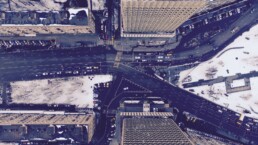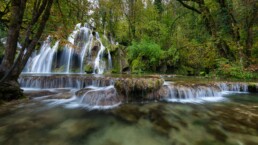Writing Inspiration
When I’m writing, I take inspiration from a whole variety of places. The world around me, conversations I’ve had with people and questions I ask myself just before I fall to sleep. As much as I’d love teachers to use my work as writing prompts for their classes (don’t forget you can download complete English and reading plans for The Halloween Parade), I occasionally find resources that I know I would have loved to use as a teacher. I’ve decided to collect them all here. Feel free to use any of them and any of the ideas – if you want to send me any pictures of the work you do with them, I’d love to see them and post them for others to use as inspiration.
I’ve turned on comments for this page, so if you have any other ideas please let me know there. I’d love to add them. Don’t forget to share the page to spread the love!

In the 1960s, the town of Centralia in Pennsylvania, USA, wanted to clean up the landfills that littered the town. Before the 1920s, it had been a vibrant mining town with a population of over 2,700 at its peak. Unfortunately, the stock market crash of 1929 meant that all of the mines closed. Illegal mining carried on, and support columns were removed from the mines. This would have devastating consequences later on.
Many of these abandoned mines were used to store garbage for the town. The town council wanted to do something about this, so they hired five members of the local fire department to take care of it. They set fire to the dump (just like they had in the past), but this time, it spread out of control. A small opening at the back of the mine allowed the flames to spread into the labyrinth of old mines underground, igniting the coal.
The fire burned undetected for many years. It wasn’t until 1979 – 17 years later – that the owner of a local petrol station realised his equipment was hot after being inserted into the ground. Over the next few years, other things began to happen in the town. In 1981, a sink hole opened up in the back garden of a local family where the fire had burned away the ground underneath. A 12-year-old boy fell into the hole and was only saved by his cousin pulling him out quickly. The gases inside would have been quickly fatal.
The fire under Centralia is still burning, and it has been estimated that it will continue to burn for 250 years. From over 1,000 residents in the 1980s, there are fewer than 10 left there today. The town is officially classed as a ghost town – the postal service has cancelled their zip code (the US equivalent to a post code) so no mail can be sent there. The roads in and out of the town are buckled and sticky due to the heat underneath them, and noxious gases pour from the cracks.
To find out more about what it’s like to live there, you can read the article at https://www.cracked.com/personal-experiences-2537-i-live-in-centralia-pa-its-americas-creepiest-ghost-town.html (warning: may not be suitable for children to read, you are responsible for checking all external content).
If you wish to explore Centralia for yourself, you can do so through Google Earth and StreetView.
Suggested writing ideas:
- Write a letter imagining you are a resident in a town that is being abandoned. Think about why it is being deserted and how you would feel about leaving. Many of the residents of Centralia stayed for long after the government told them to flee because it was their home, and they wanted to stick it out.
- Conduct interviews with imaginary people living in Centralia. Think about the types of questions you might ask and how they might answer them. Use the interviews to write a news article.
- Write a narrative from the point of view of a hiker who emerges from the woods to find themselves in Centralia or another ghost town. How would they feel? What would they do?
Suggested linked texts:
- Scavengers by Darren Simpson

Deep in the heart of Vietnam, the cave system of Son Doong extends for over 6 miles. Hidden away at the end of a long exploration is the world’s only underground rainforest, home to the only colony of monkeys known to live underground. What better way to explore the wonders of nature and the deep, immersive isolation of being deep underground than to take a visit?
The wonderful people at National Geographic have build a fully immersive website where you can walk through panoramic photos of the whole site and listen to authentic audio from the region. You can view the site at: https://on.natgeo.com/3fOm6SR
Suggested writing ideas:
- Write a journal or diary as you explore the cave system. Think about the sights, sounds and textures that you will experience on the way.
- Write a narrative adventure of the first adventurer to stumble out of the caves and into the hidden rainforest. What you be feeling? How would you react to seeing such a surprising place so far underground? Would people believe you?
- Write a newspaper describing the discovery of the rainforest. What would people want to know about it? Who could you interview to get their point of view? Think about what might happen next now that it is well-know.
Suggested linked texts:
- The Explorer by Katherine Rundell
- The Lost Book of Adventure by The Unknown Adventurer

This one really is a rabbit-hole of ideas. Google has been quietly working away on some of the most interactive and useful sites I’ve ever seen with its Arts and Culture project. Not only have they scanned and catalogued vast quantities of the artifacts, relics and artworks in many of the world’s top museums and galleries, they have also created tonnes of 360-degree video content that will transport your class away to far-flung lands and distant times. You can see all of the videos in the 360-degree section of their site. One of my favourites is watching a dinosaur come to life inside a museum and begin to explore. I’ve given some ideas for these areas of the site here, but read on for some other amazing ideas using Google Street View and some hidden features.
Suggested writing ideas:
- Take notes as you explore the 360-degree videos. Write a diary entry describing the time you watched a dinosaur come to live in front of your very eyes. How magical did it feel? Where you scared, or in awe?
- If you have access to a tablet or phone, install the Google Arts and Culture app. Use it to project Monet paintings onto your school field and explore them in real time and life-sized. Try on Ancient Egyptian jewellery or Viking helmets and take photos. Write about the time you travelled back in time and became a brave warrior. Why not interview Monet in the gardens that inspired his artwork?
- Visit a space shuttle and explore inside in 360-degree video. Imagine you are an astronaut about to leave the bonds of Earth and drift off into space. How do you feel? Write a diary entry just before you leave, or describing the journey to the International Space Station. Can you write a set of instructions helping people to understand how the shuttle works?

Most people have used Google Street View to explore their home town, but there is so much more that can be done with it. Not only can you use it to explore the streets and towns of distant cities (why not explore the favelas of Mexico or Brazil when you study South America or the streets of an Australian outback town?) but Google has also used their technology to map the interior of many of the world’s top museums.
Whatever period of history you are studying, there will be a museum that you can take a virtual tour to and explore with your class. Tie it in with a screening of Night At The Museum and let the children’s imagination go wild.
Visit the site at: https://bit.ly/36av49M
Suggested writing ideas:
- Imagine sleeping over at the British Museum in London. What strange things might you see when all the lights turn out and the Ancient Egyptian mummies come to life? What about the time a treasured artefact disappeared without a trace? Can you write a detective narrative as you try to solve the case, building suspense along the way? What about a newspaper report telling the world about the treacherous theft?
- Explore the history of Australian wildlife at the Australian Museum and consider those animals that are now extinct. Write a persuasive letter setting out the reasons why we need to work harder to protect the species that are still alive today. Explore the Great Barrier Reef in 360-degree wonder and write home about the experience. Look at the damage being caused by warming oceans and write a letter to Parliament asking them to do more to stop it. Write a newspaper article to send to your classmates, letting them know about the destruction being done. Why not put one together as a school and distribute it to other local schools to let them know as well?
- Warning: not for primary children. Listen to stories from Holocaust survivors and visit some of the most harrowing places on Earth to learn about what happened during that terrible period of human history. Write an information text letting others know what happened and why.
Whatever you choose to use it for, Google Arts and Culture is definitely worth investing some time exploring and seeing how it can fit in with your curriculum.

I actually knew about Nature Sound Map and used it a lot as a teacher, but I’ve included it here because it’s not as well-known as I think it should be. Simply put, it’s a map of the world dotted with sound recordings from amazing and exciting places. You can listen to birds chirping in the Amazon rainforest or the sounds of a dry creek bed in the Australian outback. Head to Turkey and hear the spooky, ethereal echoes in the secret gorge. Wherever you choose to take your class, there are opportunities to really bring a geography topic to life.
Suggested writing ideas:
- Not so much an idea for writing, but these sounds work brilliantly as mood-setting background noise in a classroom. Use them to help the children imagine what an area would sound like – there is often a much richer tapestry than they can imagine on their own.
- Tie in these sounds with an exploration on Google Street View and use them to build an extra layer to narrative or other descriptive writing. They can really add realism to diary entries or letters, as well.

I admit to having a vested interest here because I write a lot of content for the Literacy Shed. I’m also certain there’s probably not a teacher out there who hasn’t heard of it and benefitted from the excellent resources. However, for NQTS or those that haven’t yet heard of it, it is a great resource for writing activities based on short videos. The videos are broken down by category and are fantastic for inspiring your class, and are an excellent alternative to just basing writing on written texts. They are also powerful for use as reading comprehension activities. The paid membership contains even more useful stuff, and it is certainly worth investing in as an individual or a school.
Grab the good stuff via: https://www.literacyshed.com/home.html